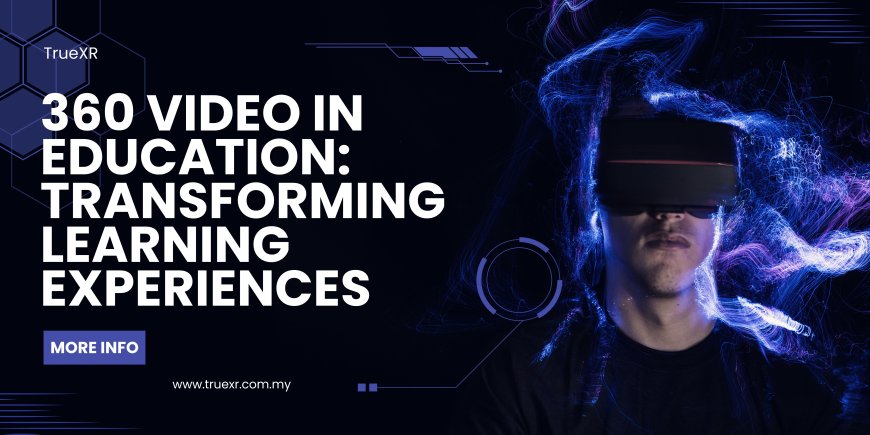360 Video in Education: Transforming Learning Experiences
One of the most exciting advancements in recent years is the integration of 360 video technology into educational settings.

In the ever-evolving landscape of education, technology continues to play an integral role in shaping the way students learn and teachers instruct. One of the most exciting advancements in recent years is the integration of 360 video technology into educational settings. This immersive medium has the potential to revolutionize traditional learning experiences by transporting students to new places, enabling them to explore subjects in depth, and fostering a deeper engagement with the material. In this blog post, we'll delve into how 360 video Hong Kong is transforming education and the myriad benefits it offers to both students and educators.
Expanding Horizons: Virtual Field Trips
With 360 video technology, this becomes a reality. Virtual field trips allow students to visit places they may never have the opportunity to see in person, opening their eyes to new cultures, environments, and perspectives. These immersive experiences not only make learning more engaging but also help to break down geographical and socioeconomic barriers, ensuring that all students have access to enriching educational experiences.
Immersive Learning: Bringing Subjects to Life
Traditional textbooks and lectures can only go so far in capturing students' attention and fostering comprehension. 360 video, on the other hand, has the power to bring subjects to life in ways that are both captivating and memorable.
Whether it's exploring the human body in intricate detail, taking a virtual tour of the solar system, or witnessing historical events unfold from multiple perspectives, 360 video allows students to immerse themselves in the subject matter, enhancing their understanding and retention of key concepts. By appealing to different learning styles and catering to individual interests, this immersive medium has the potential to make learning more accessible and enjoyable for students of all ages.
Personalized Learning: Tailoring Education to Individual Needs
One of the most significant advantages of 360 video technology is its ability to facilitate personalized learning experiences. By allowing students to explore content at their own pace and focus on areas of interest, educators can cater to the diverse needs and learning styles of their students.
Whether it's providing additional context for visual learners, offering interactive elements for hands-on learners, or presenting complex concepts in a more digestible format, 360 video empowers educators to adapt their teaching methods to meet the unique needs of each student. This personalized approach not only fosters greater engagement and motivation but also ensures that every student has the opportunity to succeed.
Empowering Educators: Enhancing Instructional Techniques
While students are the primary beneficiaries of 360 video technology, educators also stand to gain a great deal from its integration into the classroom. By leveraging this immersive medium, teachers can create dynamic and interactive learning experiences that captivate students' attention and stimulate their curiosity.
Whether it's designing virtual scavenger hunts, facilitating virtual discussions, or incorporating gamified elements into lessons, 360 video opens up a world of possibilities for innovative instructional techniques. Moreover, by providing educators with access to a wealth of immersive educational content, this technology empowers them to enrich their lessons and inspire a lifelong love of learning in their students.
Overcoming Challenges: Navigating Implementation and Accessibility
While the potential benefits of 360 video in education are clear, its widespread adoption does present certain challenges. Chief among these is the need for adequate resources and support to integrate this technology effectively into educational settings. From securing funding for equipment and software to providing training for educators, schools must invest in the necessary infrastructure to ensure that 360 video enhances rather than detracts from the learning experience.
Additionally, considerations must be made to ensure that this technology is accessible to all students, regardless of their socioeconomic background or physical abilities. By addressing these challenges proactively, educators can maximize the potential of 360 video to transform learning experiences for students around the world.
Conclusion
In conclusion, 360 video technology has the power to revolutionize education by providing students with immersive learning experiences that transcend the limitations of traditional teaching methods. From virtual field trips that transport students to distant lands to interactive lessons that bring subjects to life, the possibilities are endless. By embracing this transformative technology and harnessing its potential to engage, inspire, and empower students, educators can pave the way for a brighter future where learning knows no bounds.







